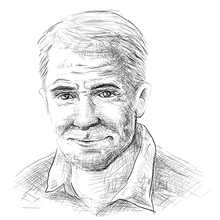Raising raw material prices and interest rates is the most disturbing..."New year's growth rate will
- 정훈 신
- 2022년 7월 12일
- 3분 분량

South Korean companies cited soaring raw material prices and rising interest rates as the biggest destabilizing factors for the Korean economy. In addition, it is predicted that the contraction of investment due to spider web-like regulations will also hamper Korea's economic growth. Due to these concerns, it was difficult to find a company that expected economic growth beyond 2021 in the new year, and the negative trend was stronger that the GDP growth forecast would fall short of 3% suggested by the government and major national research institutes.
In a survey of 100 major domestic companies conducted by the Seoul economy on the 31st, concerns that cannot be covered by hope alone for the New Year were everywhere. Most companies cited "a surge in raw material prices (25.8%)" as the biggest source of anxiety that will burden the Korean economy in the new year. Raw material prices jumped sharply in the second half of 2021, adding to the cost burden of companies. The price of Samsung Electronics' Galaxy S22 series, which is scheduled to be released in early 2022, is expected to increase by about 100 dollars (about 120,000 won) from its predecessor, but the main reason is the jump in material prices due to the supply shortage of semiconductors. In the electronics industry, the average price of exterior resin rose 21.2% year-on-year and copper rose 14.6% year-on-year in the third quarter of 2021, with the average sales price of TVs rising 20%. When raw material prices rise, companies' joys and sorrows vary depending on how much they can pass on to product prices, and the industry believes that second- and third-tier suppliers often take on the damage as they fail to raise delivery prices on time. One of the reasons why the Korea Chamber of Commerce and Industry's recently announced economic outlook index (BSI, positive when it is over 100) fell 2 points from the previous quarter to 89 was the rise in global raw material prices.
It was followed by a "interest rate hike (21.5%)." In this regard, 41.3% of companies expected to raise the key interest rate more than twice when asked about the trend of change in the benchmark interest rate in the new year, while 33.7% of companies said it was a one-time increase. Three out of four companies are expected to raise interest rates at least once more. The rate hike affects commercial bank interest rates, making it more difficult for companies with high debt ratios. According to an analysis by the Korea Economic Research Institute, interest costs of companies increased by 13.5 trillion won and net profit ratio fell by 0.29 percentage points due to the 0.5% point increase in interest rates twice in 2021. Households are also expected to see interest costs increase by 1.49 million won per household, 17.5 trillion won overall, and overdue payments increase by 3.2 trillion won. In other words, a rate hike can adversely affect the financial situation of companies, while reducing household consumption capacity and pressuring companies in all directions.
Other factors that companies think are "investment contraction (11.8%)," "regulation increase (11.8%)," and "export economic slowdown." The contraction of investment and the slowdown in the export economy are also related to rising raw material prices and interest rate hikes. Industry officials say that increased regulations and shrinking investment are also highly correlated.
Perhaps due to such concerns, only 14.1% of the respondents said they would show "growth beyond this year" over the Korean economic outlook for the new year, while 64.1% said "growth below this year" and 13% chose "low growth far below this year." In terms of extension, the "late 2%" was the most forecast for Korea's economic growth in the new year, followed by "early 3%" with 25.8%. Next is "mid 2% (16.1%)," "early 2% (9.7%)" and "late 1% (5.4%)," and two out of three companies are expected to fall below 3%. Although the government (Ministry of Strategy and Finance) offered 3.1 percent and the Bank of Korea and the Korea Development Institute (KDI) offered 3.0 percent, companies, which are the key players in economic growth, have lower standards.
Companies predict that the won-dollar exchange rate will be formed at the level of 1,150 to 1,200 won (57.6%) in the new year. "1,100 to 1,150 won (23.9%)" followed, putting more weight on stability than rapid exchange rate fluctuations. There was no significant difference considering that the Korea Institute of Industrial Economics and Trade predicted an annual average of 1,164 won and the LG Institute of Management expected 1,160 won to 1,170 won. The won-dollar exchange rate level that companies can handle is also the highest at 30.5% between 1,100 won and 1,150 won, followed by 1,050 won and 1,100 won (25.6%). The outlook for oil prices (dollar per barrel) was 65 to 75 dollars (50.5%) based on West Texas crude oil (WTI), and 75 to 85 dollars (43.0%) ranked second at a similar rate.
Date: 2021-12-15
Reporter: 서화목




댓글